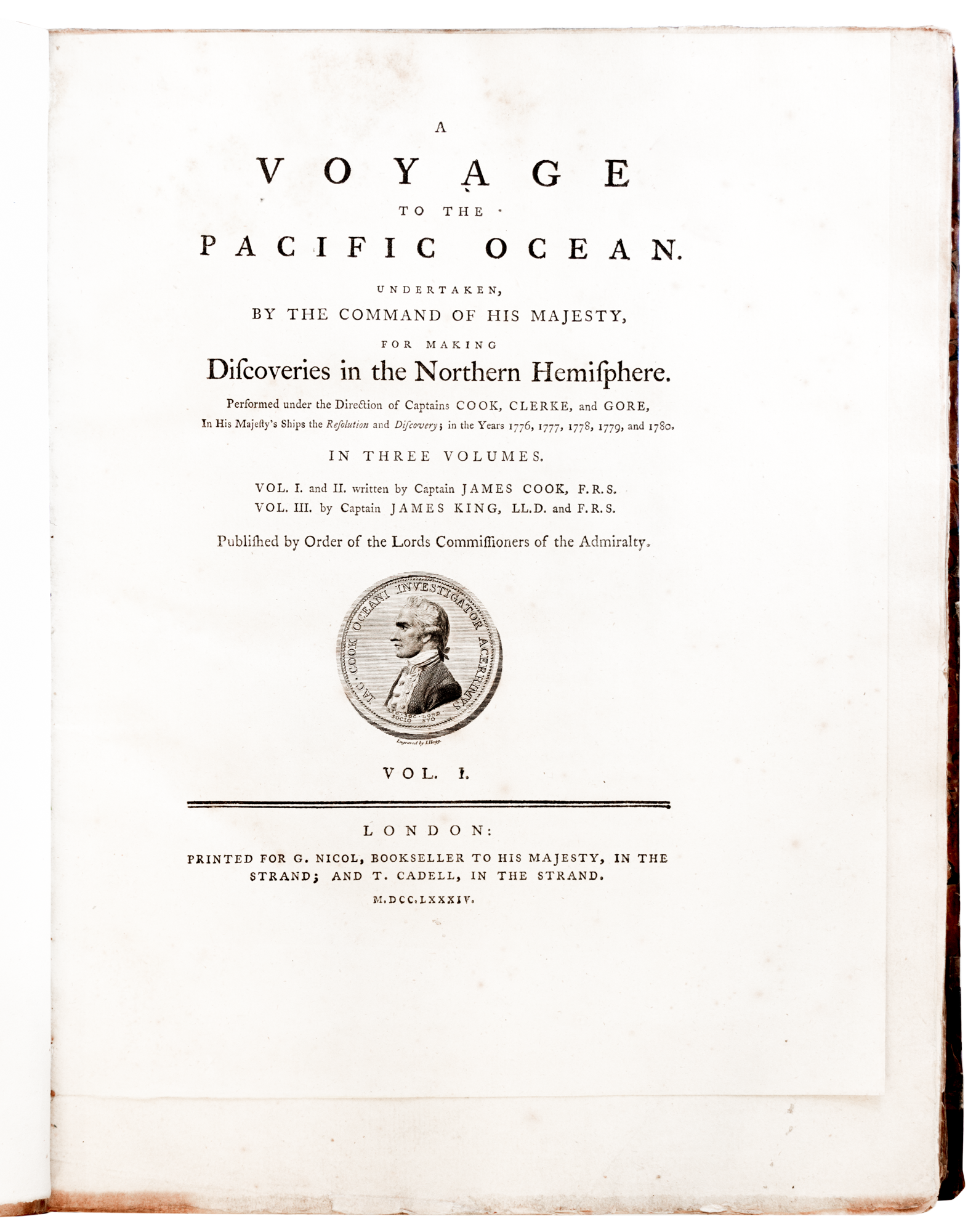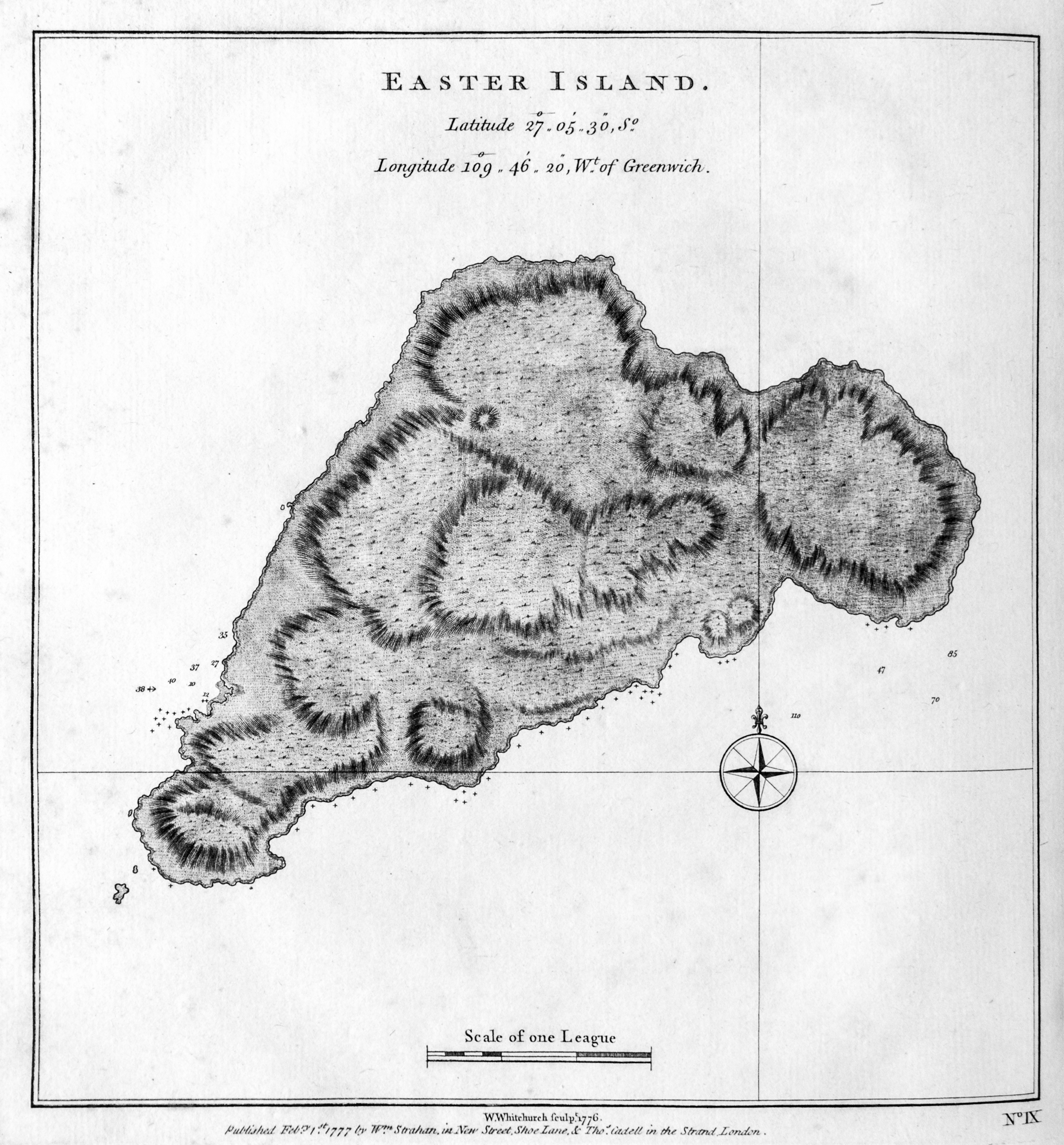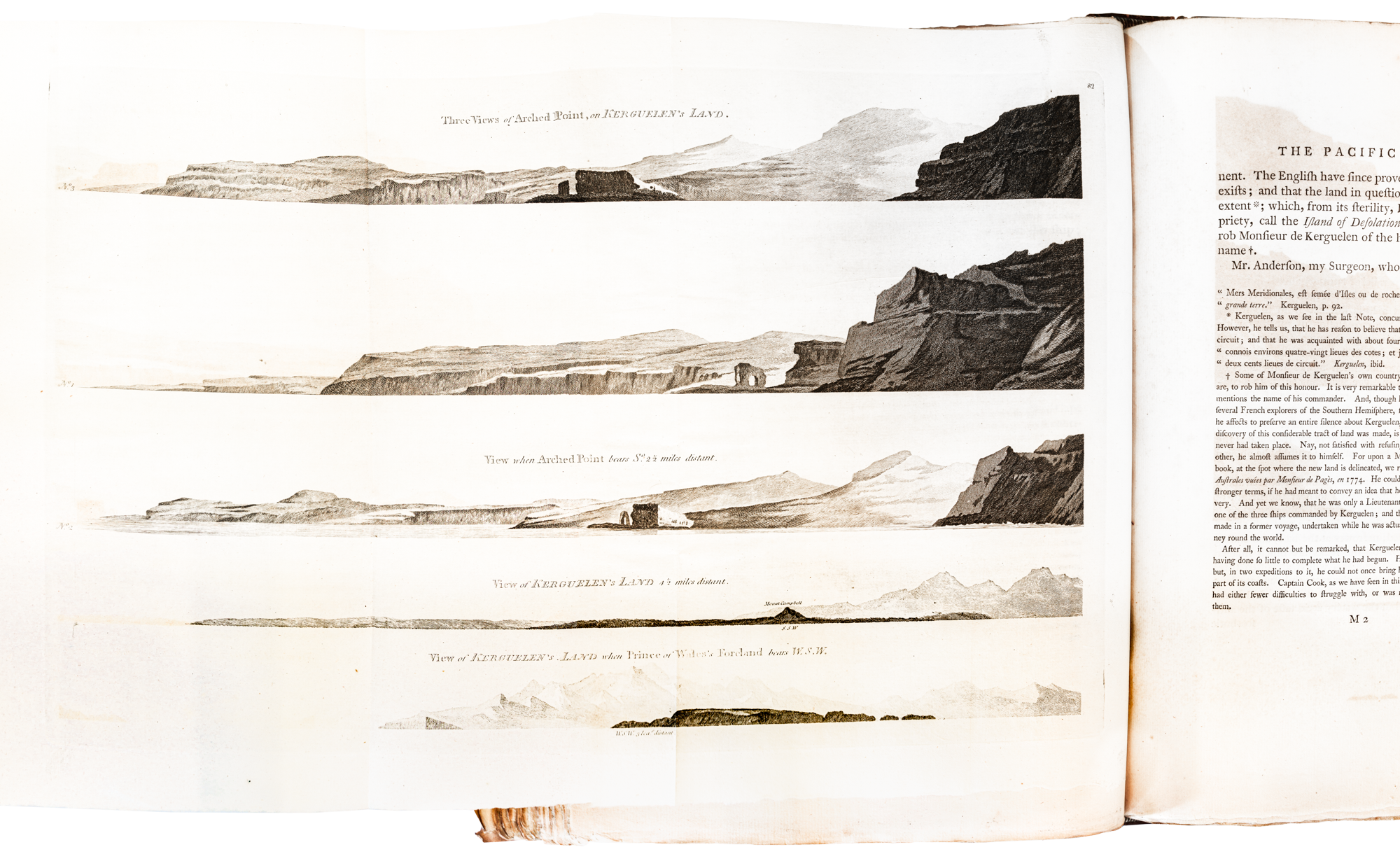The aim of this voyage was to find an ice-free North West passage around the north of the American continent linking the Atlantic and Pacific Oceans. If such a route could be found it would have greatly reduced the distance and cost of travel for the lucrative trade in tea and spices with China and the Far East.
The plan was that the two ships, HMS Resolution commanded by Captain James Cook (who also commanded the expedition) and HMS Discovery commanded by Captain James Clerke, would make an approach from Pacific or western side. Meanwhile Richard Pickersgill commanding the frigate Lyon would make an approach from the Atlantic or eastern side. Both Resolution and Discovery were Whitby built colliers re-fitted for the voyage.
Captain Cook's first lieutenant was John Gore, who had sailed with him on HMS Endeavour, and James King was second officer. The master was William Bligh who later commanded HMS Bounty.
Cook set sailed from Plymouth on 12 July 1776 and Clerke on 1 August 1776. They met up at the Cape of Good Hope and, after reprovisioning, set sail again on 1 December 1777 across the Indian Ocean reaching van Diemen's Land on 26 January 1777.
Sailing via New Zealand and Tahiti they reached Hawaii (which Cook named the Sandwich Islands) on 18 January 1778 - the first Europeans to do so. They then sailed east to the west coast of America and then turned north recording and mapping the coast line as they went - the first Europeans to do so. Reaching Alaska they then turned west and north into the Bering Sea and then the Chukchi Sea until their way was blocked by ice.
As they could go no further they turned southwest and sailed down the Siberian coast and back into the Bering Sea. They then sailed east to the Aleutian Islands where they spent three weeks re-caulking the vessels. Leaving there on 24 October they sighted Maui on 26 November 1778 and after eight weeks searching for a good harbour anchored in Kealakekua Bay. Here they traded with the local population and developed reasonably good relations. However, sailing after a months stay there they had to return because of a broken foremast on Resolution and found the mood of the local people had changed and they were not as warmly welcomed as before. A dispute then arose over a stolen boat and in a melee on 14 February 1779 Cook was attacked and killed along with four marines. In spite of being killed by the Hawaiians Cook's body was treated as if he were a chief- it was disembowelled and the flesh removed and the bones kept as religious icons.
Captain Charles Clerke, although dying of tuberculosis, now took over the expedition and sailed north once again landing at the Kamchatka Peninsular where the Russians helped them with reprovisioning. They then made a last attempt to sail through the Bering Strait but had to turn back once again due to the ice. Clerke died at Petropavlovsk on 22 May 1779.
John Gore then took over command of the expedition and the two ships turned for home with Gore captaining Resolution and James King, Discovery. They finally made landfall at Stromness, Orkney after being blown off course and arrived off Sheerness 4th October 1780.
On their return to London James King completed Cook's account of the voyage. After editing, and the addition of the surgeon William Anderson's journal, the final publication in three volumes was made in June 1784. It contains 1617 pages and 87 plates and, in spite of being expensive, sold out within three days.


